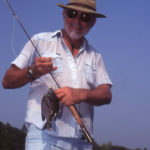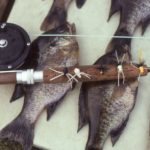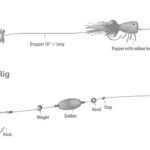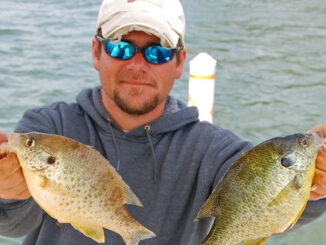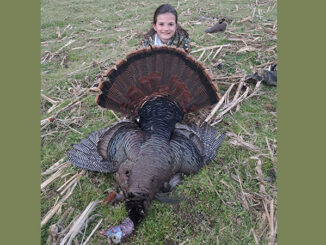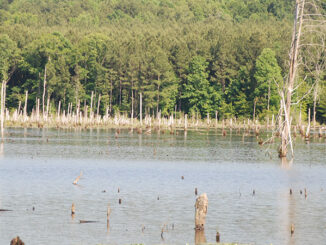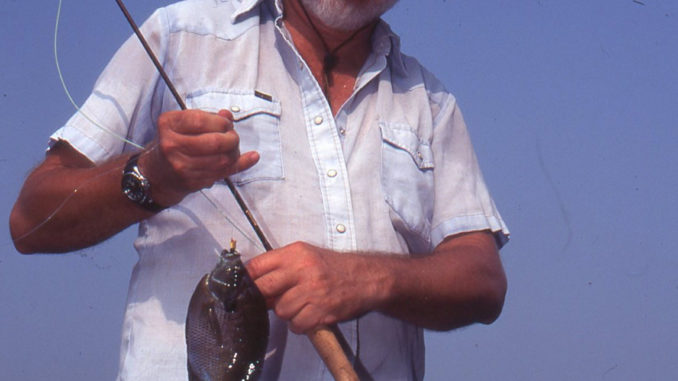
Fly rods, ultralight tackle will fill up a cooler with aggressive bluegills.
Why bluegills?
Mayfly carcasses are everywhere. Boat docks and piers are plastered with dead insects. Boats and tarps are covered with them. Carcasses are everywhere — except on the water.
Why none on the water? Those that expired over water got gobbled up by foraging bluegills, one of those species of small sunfish widely known as bream.
In May, plus or minus a little, mayflies swarm at Mountain Island Lake just outside Charlotte, and monster bluegill linger in shallow water to reap the bountiful harvest of dying insects.
Fly-fishing equipment is among the most fun to catch these battling panfish, which put up a heckuva fight. Among aficionados of the long rod, the old saw is, “If bluegill grew as big as tarpon, no one would dare catch one.”
Dale Brentrup, professor of architecture at UNC-Charlotte, knows about fly rods and bluegills.
“Fly fishing for bluegills? That’s a good thing to talk about,” he said. “I got started fly fishing for bluegills when I moved to Wisconsin as a young professional. My (business) partner was raised up there. That’s how we started every spring, fly-fishing for bluegills. The area around Rice Lake, Wisconsin, is pock-marked by small, natural lakes, and in the spring, big bluegills move close to shore, and a fly rod is the best way to catch them.”
For anglers beginning a fly-fishing career, mayfly season is a great way to get started. Advanced skills are not required, and lots of fish are around, so you pick up useful experience very quickly. Many of us got started fishing for panfish in the spring with cane poles and worms. For the same reason, cane poles and worms are a good starting spot, so is fly-fishing.
“I got started using an old Pfleuger Medalist fly reel,” said Brentrup. “It was the standard at the time. I’ve lost track of that reel. And I used an old bamboo fly rod that has fallen apart by now. I use any number of fly rods. Often, I use a Cabela’s special. I have various lengths, usually 8- to 9-foot, for bluegills. And I have rods from 3-weight to 8-weight. The lightweight rods are ideal for bluegills. The other day, I was using my 3-weight.”
For leaders, Brentrup is not picky.
“Oh, I don’t know. Usually I start with a leader about nine feet long, and as it gets used and the end clipped off, I keep it on until it’s about six feet long. Small poppers are the lure of choice. Usually a size 10 is about right.”
While a single piece of 8-pound test monofilament will work, a tapered leader lets the fly “turn over” as it is cast.
Bill Shumaker, a retired philosophy professor at UNCC, said you don’t need a lot of action to attract a bluegill to a tiny popper.
“You really don’t have to manipulate the popper as you would for largemouth bass,” Shumaker said. “Once the popper lands on the surface, let it rest.”
At a lake like Mountain Island, where the water is usually fairly clear, anglers can see fish appear under the popper, inspecting it. Often, the tiniest twitch will result in a strike. Most poppers designed for this sort of fishing have extended rubber, fiber legs. The popper does not have to move far to cause these legs to wave about and draw strikes.
A small nymph, the sort trout anglers use, can be tied from the bend of the popper’s hook with a piece of 4-pound test monofilament, allowing for some instances where two fish strike on a single cast. Usually, the first strike comes on the popper. Once the first fish is hooked, the second fish grabs the nymph. Does the first fish convince the second it’s a good deal? Who knows.
In the spring, bluegills scatter all along the shoreline.
“In Wisconsin, we fished along the edges of weed beds,” Brentup said. “Here we fish under boats or boat docks, near fallen logs or over rocky substrate. They’re all over the lake. About anywhere you go at Mountain Island is a good spot.”
In the lower sections of Mountain Island, between McDowell Creek and the dam, docks and piers are the principal cover. Upstream from McDowell Creek, woody debris and rocks are the most common spots to find these feisty game fish.
All of the various bream species can be caught by means other than fly rods. Brentrup also recommends ultralight spinning gear.
“Lots of fun can be had with ultralights. Small crankbaits, little jigs and plastic trailers, they all work,” he said
A 4- or 5-foot rod, 6-pound test mono and a handful of lures and any angler is in business. Among crankbaits, a Rebel Crawfish is tough to beat, and the smallest Roadrunners are deadly.
While cane poles have become hard to find, long, fiberglass poles can do the same work. Particularly as the biggest bluegills move away from shallow water, worms or crickets become popular with Mountain Island anglers. A long, fiberglass pole is an ideal way to deliver them to the waiting mouths of sunfish.
Recently, spinning gear rigged with a slip bobber has become a favored means of fishing natural bait for panfish at Mountain Island and beyond. The line slides through the slip bobber, stopping at the depth the bait will be suspended by a small knot or other obstruction such as a tiny bead. The bobber can be reeled right up to the rod tip, making for easier casting. When cast, the bait and split shot pulls line through the bobber until it hits the stop or knot.
After the bigger bluegills move as deep as eight feet, the most productive spots downstream from McDowell Creek are the deeper end of piers and brushpiles sunk by enterprising crappie anglers. Upstream from McDowell Creek, fallen logs and brushpiles in the appropriate depth are likely haunts of bluegills.
As far as size and distribution of bluegills, Mountain Island is a typical reservoir fishery; there are thousands of catchable fish.
“In general terms, bluegill in reservoirs across North Carolina make up a significant part of the forage base, particularly for largemouth bass,” said Lawrence Dorsey, a fisheries biologist for the N.C. Wildlife Resources Commission. “However, anglers seeking bluegills will typically find bluegills in the 4- to 6-inch size range. This is true at Mountain Island. We just completed a trap-net survey there for crappie, and while we saw a lot of bluegills, most all of them were in (that) size class.”
Periodically, larger ones are taken, but an angler or two can almost always catch a “mess of fish.”
All across North Carolina, bluegills and other panfish we call bream provide outstanding opportunities to get out, catch some fish and have a great time. With the emphasis on black bass species, crappie, stripers and catfish they are often overlooked.
Even among those who target bluegills, catching them with fly rods is a neglected practice. Mountain Island Lake is half an hour from the center of Charlotte. When the mayflies are hatching is prime time for fly rod bluegills. Give it a try.
DESTINATION INFORMATION
HOW TO GET THERE: Mountain Island Lake covers 3,200 surface acres, wedged between Lake Norman upstream and Lake Wylie downstream. NC 16 crosses the lake upstream from the dam, and NC 73 crosses the upper end of the lake. The N.C. Wildlife Resources Commission maintains the Riverbend Access Area off Horseshoe Road near NC 16 on the western side of the lake, and the Neck Road Access Area off Neck Road on the eastern side of the lake near Beatties Ford Road.
WHEN TO GO: The peak of the mayfly hatch usually takes place in May, and that’s when you need to break out your fly rod, fiberglass Breambuster or ultralight spinning rod.
TACKLE/TECHNIQUES: Fly rods between 8- and 9-feet long, anywhere from 3- to 8-weight rods, with popping bucks and nymph droppers, ultralight spinning tackle for in-line spinners and small crankbaits such as the Rebel Crickethopper, fiberglass rods for fishing live bait (crickets, worms) below a cork or sliding bobber.
FISHING INFO/GUIDES: Jerry’s Bait & Tackle, 4354 S. Tryon Street, Charlotte, 704-525-4807; Koyote Fishing Tackle, 1501 Hickory Grove Road, Gastonia, 704-820-0052. See also Guides and Charters in Classifieds.
ACCOMMODATIONS: Motels are available close to the lake near Northlake Mall off I-77 at Exit 18: Comfort Suites, 7315 Smith Corners Blvd., Charlotte, 704-598-0478; Fairfield Inn, 9230 Harris Corners Parkway, Charlotte, 704-509-0123.
MAPS: Kingfisher Maps, 800-326-0257 or www.kfmaps.com; Duke Energy, www.duke-energy.com/pdfs/mtnisland.pdf.

